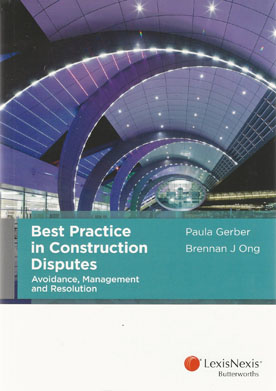
Best Practice in Construction Disputes takes a holistic approach to construction disputes in an effort to identify and examine their genesis and life cycle. It examines the factors that contribute to a high incidence of disputes on major construction projects, including the adversarial culture of the construction industry, the high degree of uncertainty surrounding projects, the inevitably of conflict between contracting parties and the role of the construction contract in facilitating such conflict.
Best Practice in Construction Disputes analyses how conflicts on construction projects all too often escalate into costly and drawn-out disputes. It identifies strategies that parties can employ to ensure that conflicts are used to generate positive solutions to problems rather than escalating those problems into disputes.
Dispute Avoidance Processes (DAPs) are a relatively recent innovation that are increasingly being used on major construction projects around the world to help parties communicate, cooperate and collaborate and avoid the escalation of conflicts into disputes. Best Practice in Construction Disputes contains the most comprehensive analysis of current DAP models, including Dispute Resolution Boards (DRBs), Dispute Adjudication Boards (DABs), and Dispute Resolution Advisors (DRAs).
DAPs are, not a panacea, and there will always be disputes that cannot be avoided. Best Practice in Construction Disputes examines the key forms of Alternative/Appropriate Dispute Resolution (ADR) that are available for resolving construction disputes, including mediation, expert determination, senior executive appraisal/mini-trials and early neutral evaluation, as well as emerging hybrid models such as med-arb, arb-med and collaborative settlement processes. It provides the most scholarly analysis of how these models can be used to resolve construction disputes without the need to resort to any form of binding dispute resolution.
Some construction disputes are incapable of being resolved without the imposition of a final and binding decision. Litigation, arbitration and adjudication are the three forms of binding dispute resolution available for the resolution of construction disputes. Best Practice in Construction Disputes examines these three systems in order to determine how they currently work and how they could be improved.
This is the first book to identify world's best practice in the three distinct areas of avoidance, management and resolution of construction disputes. It provides a comprehensive roadmap to guide the construction industry out of its current disputatious culture and into state-of-the-art practices that will make major construction and infrastructure projects more profitable for all involved.
Features